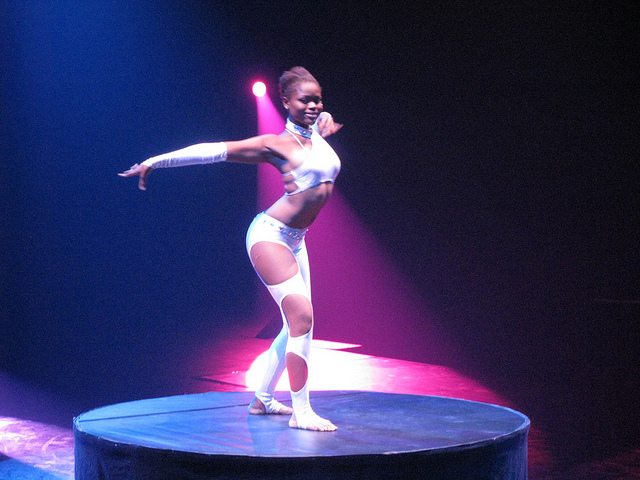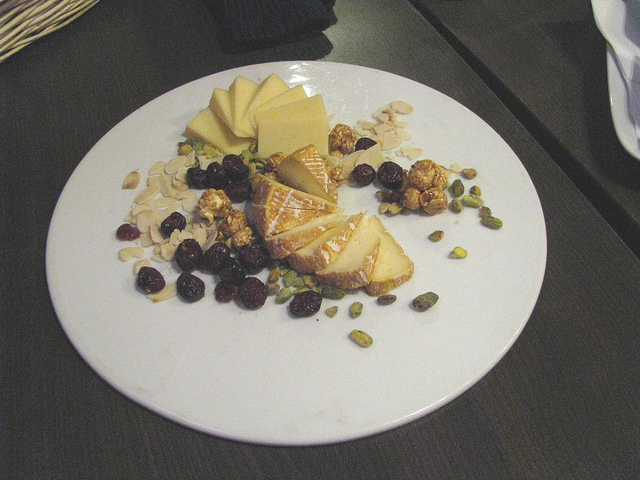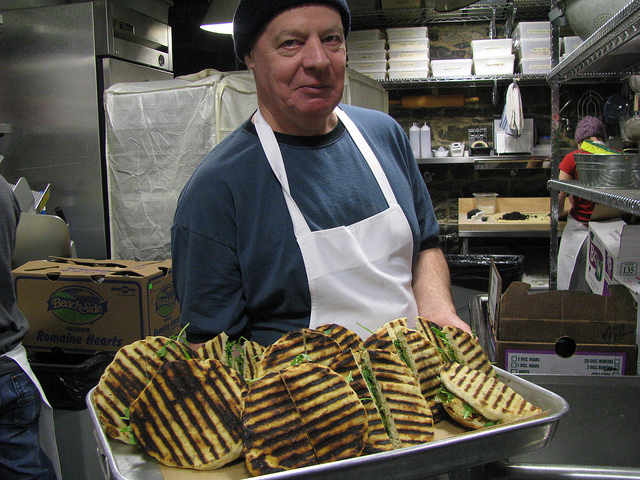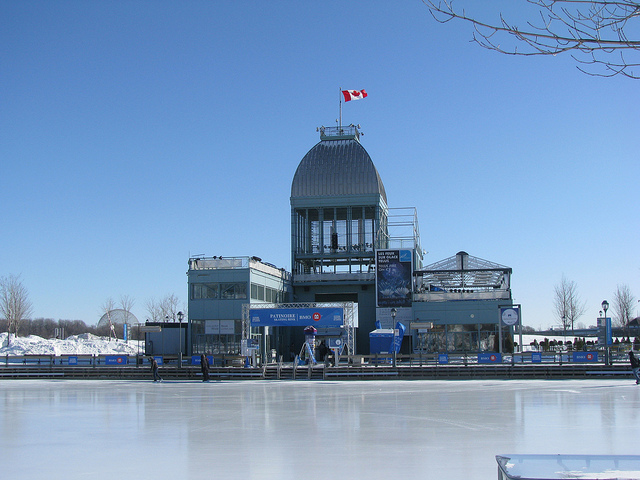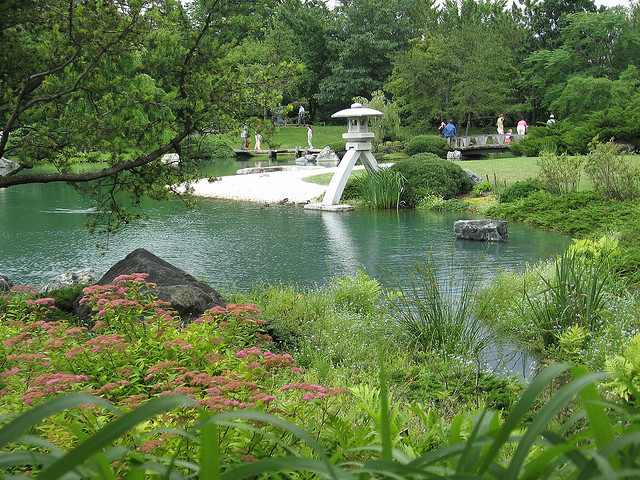Our guided driving tour in the morning had provided us with great background knowledge of Montreal, its history and culture. In the afternoon we were now going to have a chance to sample some unique Montreal-based entertainment: a show at La Tohu, a performance c entre for circus arts housed in a specially designed circular venue. La Tohu is a non-profit organization that was founded by the National Association of Circus Arts, the National Circus School and the Cirque du Soleil. Since 2004, it has been providing one of the world’s largest venues for circus arts training, creation and performance.
Montreal is one of the world’s most important centres for circus arts. The headquarters of the famous Cirque du Soleil is located just minutes away from La Tohu, and delivers one of the world’s most popular entertainment experiences. Founded in 1984, the Cirque du Soleil now has over 5000 employees and a permanent show in Las Vegas that plays to more than 9,000 people a night. The company’s shows have been performed in over 270 cities in the world and on every continent except Antarctica. This afternoon we were going to see the Festival Mondial du Cirque de Domain.
Selected by a jury at the most recent World Festival of the Circus of Tomorrow in Paris, ten award-winning acts were on the menu for us with circus artists from all over the world. The extraordinary performances included a phenomenal contortion act; a man-woman duo who created amazing living sculptures together, sometimes with both people supported only on one hand; we also saw impressive juggling and trapeze acts. Ringmaster Calixte de Nigremont led the audience through the program, mind you, in French only. Judging by the repeated laughs he was getting, he must have been doing a great job.

The show finished around 4:30 pm and we took the Metro back to our hotel, the Auberge Bonaparte in Old Montreal. Travelling in Montreal in the winter we noticed a couple of things: despite the cold weather, people were out and about everywhere; they were absolutely not deterred by the chilly winter temperatures. It must have been at least -15 degrees Celsius, and people were walking, talking, having fun – absolutely undeterred by the climate. Montreal’s joie-de-vivre is able to overcome the often frigid temperatures of winter.
The other thing that struck us was the efficiency of the Montreal transit system. With our multi-day transit pass we were able to hop on an off any subway or bus, and the rubber-tired Montreal subway whisked us back and forth quietly and efficiently among the major sights and neighbourhoods. The island of Montreal where all the city’s main sights are located is quite compact and well serviced by public transit, a fact that 7 billion passengers took advantage of in 2010. The Montreal public transit system actually enjoys the second highest ridership per capita in North America, after New York City.
Following our subway ride we walked a few minutes through the streets of Old Montreal to our hotel where we rested up for a few hours. A long soak in the Jacuzzi bathtub at the Auberge Bonaparte was able to melt any winter chills away from my body. In the evening we headed out again, just a few minutes on foot down the street, to a popular local Indian restaurant called Ghandi. This eatery is also owned by Louis Ladouceur, owner of the Auberge Bonaparte, and we were going to meet him and his partner Farook to enjoy dinner together. Farook, who originally hails from Bangladesh, explained that Restaurant Ghandi has been in business since 2001 and was the only Indian restaurant in Old Montreal for many years.

A tour of the kitchen was next, and the first thing Farook showed me was the clay ovens where tandoori chicken, chicken or lamb tikka and nan bread are made. One of the chefs was in the middle of making dough for the nan bread and proceeded to show us how this Indian flat bread is actually cooked. He flattened a round ball of dough with a roller and slapped it between his hands before shaping it on a round cushion to make a heart-shaped flat piece of dough. Then he stuck the piece of dough on the interior wall of the clay oven where it was left to cook on one side only. After 40 seconds in 400 degree Fahrenheit the piece of nan was ready and the chef pulled it off the wall with two metal hooks. The final touch was a bit of butter to soften and moisten the nan bread.
Farook showed me the various spices that are used for his Indian dishes: red chilli powder; a mixture of cumin, coriander and curry powder; tamarind; tomato paste; salt; garlic; ginger; fenugreek and sultana raisins. He even took me into the dishwashing area where an employee was filling a high capacity dishwasher that gets very hot in order to destroy any possible bacteria growth. Back out in the dining room, Farook explained that this restaurant is always very busy, even on Sunday nights as today. A few years ago they had to expand and add a second dining room to accommodate all the guests. Since the expansion, Restaurant Ghandi now holds about 100 people.
When asked about his eatery’s most popular dishes, Farook responded that the most demanded crowd pleasers are tandoori chicken, butter chicken and lamb or chicken tikka massala. But the restaurant also has a very extensive vegetarian menu as well as a large assortment of desserts, such as Indian pastry, coconut cake, kulfi (Indian ice cream), rice pudding and mango sorbet. The wine list features 60 different red and white wines, a selection of champagnes and sparkling wines and about six varieties of red and white house wines. Beers hail from places like India, Great Britain, Germany and Canada, and Indian drinks include the yoghurt-based mango lassi.

We sat down for dinner, and shortly afterwards an impressive assortment of appetizers arrived: medium spicy somosas with minced meat, onion fritters, shrimps puri (shrimps inside an Indian pancake), chicken tikka, vegetarian somosas and assorted vegetables. Our main courses included vegetable biryani, Bangladeshi chicken madras, vegetarian dal lentils, chicken bhuna– slightly spicy curry, and vindaloo – very spicy curry. All four of us dug in, shared all the dishes and enjoyed the aromatic flavours of South Asia – a wonderful way to end another interesting day in Montreal.
